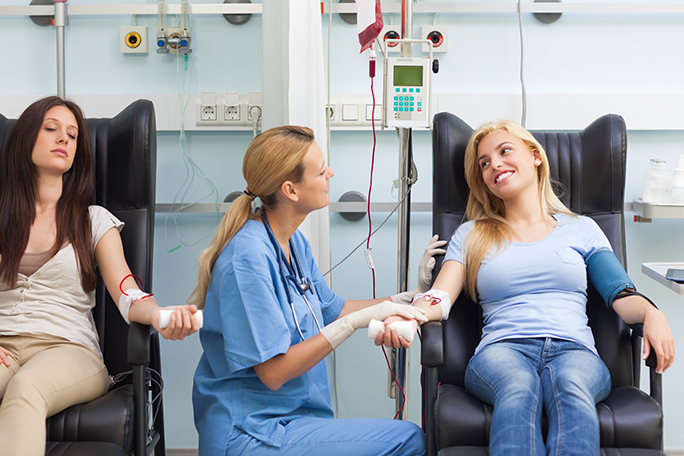Ultimate Guide to Acing Your Practice Phlebotomy Test: Tips, Resources, & Practice Tips
Embarking on your journey to becoming a certified phlebotomist can be both exciting and challenging. One of the most critical steps in this journey is acing your practice phlebotomy test. Whether you’re preparing for a certification exam or a skill assessment, thorough readiness is key. This comprehensive guide will equip you wiht effective tips, essential resources, and practical strategies to help you excel in your practice test and confidently progress toward your career goals.
Understanding the Practice Phlebotomy Test
What Is the practice Phlebotomy Test?
The practice phlebotomy test is a simulated assessment designed to evaluate your knowledge of blood collection techniques, safety protocols, and patient care. It typically includes both theoretical questions and practical demonstrations, mirroring real-world clinical scenarios. Preparing well for this test ensures you are ready to handle actual patient interactions with competence and confidence.
Key Components of the Test
- Knowledge of Anatomy & Equipment: understanding veins,arteries,and proper equipment handling.
- Venipuncture Techniques: Proper tube ordering, needle insertion, and collection procedures.
- Safety & Infection control: Correct use of gloves, antiseptics, and disposal of sharps.
- Patient Interaction: Communicating effectively and calming anxious patients.
- Troubleshooting Skills: Handling difficulties like collapsed veins or patient discomfort.
Top Tips to Prepare for your Practice Phlebotomy Test
1. Familiarize Yourself with Phlebotomy Procedures
Thorough understanding of the step-by-step process of blood collection is basic. Review your training manuals, watch instructional videos, and practice the techniques repeatedly to develop muscle memory.
2. Gather Reliable Study Resources
Effective preparation relies on quality resources. utilize textbooks, online courses, practice tests, and flashcards that focus on phlebotomy procedures and safety guidelines.
- Recommended Books: “Phlebotomy Technician Certification Study Guide”
- Online Platforms: Khan Academy, Udemy, or Coursera courses on medical laboratory procedures
- Practice Tests: Utilize online practice exams to simulate test conditions
3.Practice Hands-On Skills Regularly
Engage in simulated blood draws using mannequins or supervised practice with peers or mentors. Focus on mastering needle insertion, tube filling, and post-procedure care.
4. Learn and Memorize Key Protocols
Memorize safety protocols, OSHA standards, and the sequence of draw to avoid common errors. creating mnemonics can help retain this information.
5. Develop Good Test-Taking Strategies
- Read questions carefully to understand what is being asked.
- Manage your time efficiently to complete all sections.
- Answer easier questions first to secure rapid points.
- Review your answers if time permits.
Essential resources for Practice Phlebotomy Preparation
Online Practice Tests & Quizzes
Taking practice quizzes helps identify weak areas and build confidence. many websites offer free and paid practice exams tailored for phlebotomy certification.
Study Groups & Forums
Joining online forums or study groups provides peer support, shared resources, and discussion on challenging topics.
Video Tutorials & Demonstrations
Visual learning enhances understanding of technique nuances. Look for reputable videos demonstrating proper blood draw procedures.
Sample Practice Test Table
| Section | Number of Questions | Time Limit |
|---|---|---|
| Theoretical Knowledge | 30 | 30 minutes |
| Practical Skills | 10 blood draws | 60 minutes |
Practical Tips for the Day of the Test
- Get a good night’s sleep before the test day.
- Dress professionally and bring necessary identification.
- Arrive early to settle in and reduce anxiety.
- Bring needed supplies, if permitted (e.g., gloves, alcohol swabs).
- Stay calm and focused; breathe deeply to manage stress.
Case Studies & First-Hand Experiences
Case Study: Overcoming Vein Difficulties
A student encountered a patient with collapsed veins during practice. By remaining calm, adjusting the needle angle, and applying gentle pressure, they succeeded in completing the draw. This experience underscored the importance of patience and adaptive techniques.
First-Hand Tips from Successful Phlebotomists
- “Practice, practice, practice - muscle memory is key.”
- “Always prioritize patient comfort and safety.”
- “Review your procedures regularly to stay sharp.”
Benefits of Adequate Preparation
- Increased confidence during the test.
- Higher likelihood of passing on the first attempt.
- Builds competence for real clinical situations.
- Prepares you for certification and employment seamlessly.
Conclusion
acing your practice phlebotomy test is a vital step toward your certification and professional success as a phlebotomist. By understanding the test components, utilizing quality resources, practicing essential skills regularly, and adopting effective test strategies, you set yourself up for success. Remember,preparation and perseverance are your best allies. Keep practicing, stay motivated, and you’ll be well on your way to confidently passing your practice test and embarking on a rewarding healthcare career.
Ready to excel in your phlebotomy journey?
Explore our top-rated practice tests and study resources today to boost your confidence and mastery!
